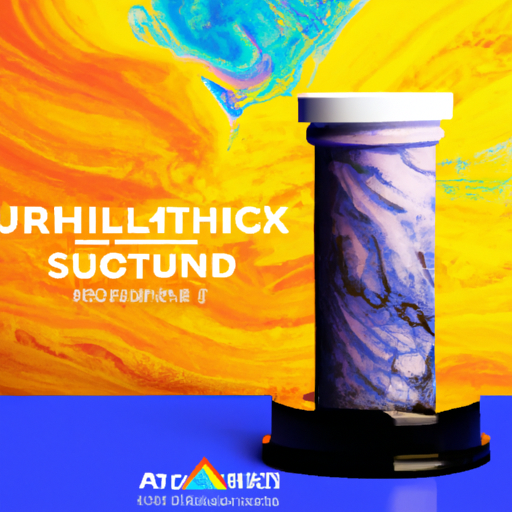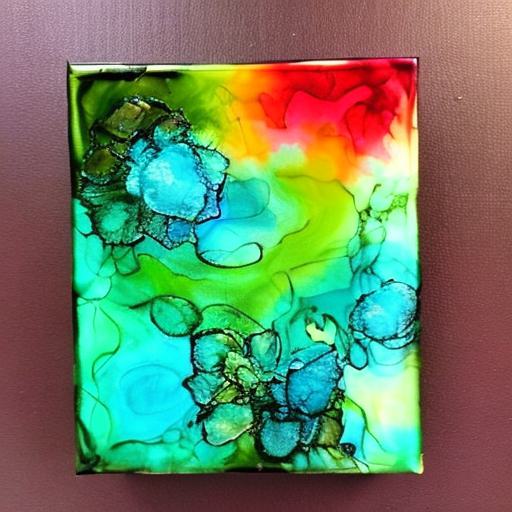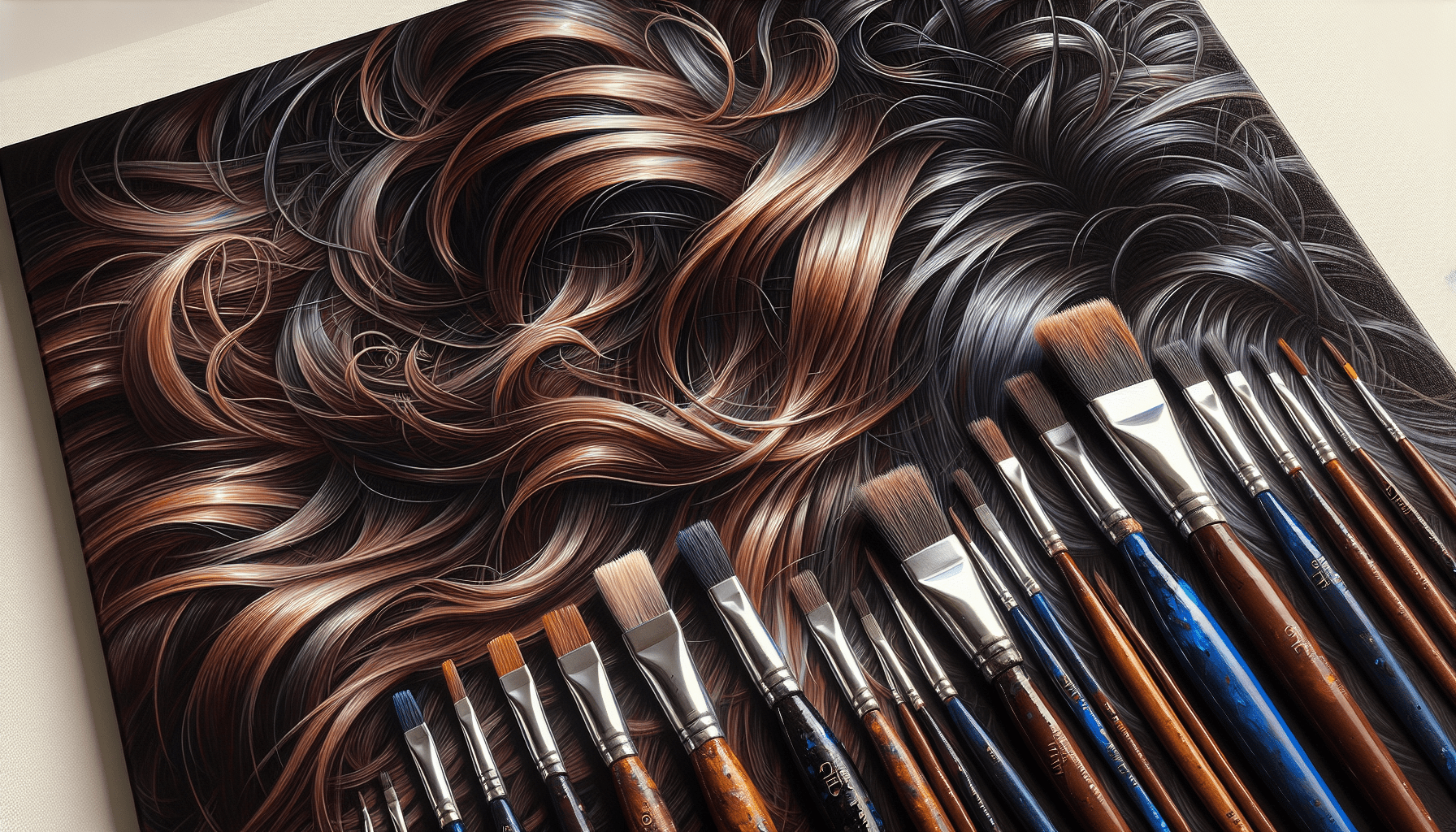Imagine the feeling of transforming a blank canvas into a masterpiece with just a stroke of a brush. The vibrant colors, the intricate details, and the sheer satisfaction of creating something entirely your own. But have you ever wondered if there was another way to elevate your art even further? That’s where the intriguing world of sublimation comes into play. In this article, we will explore the question that many artists ponder: can you sublimate on acrylic paint?
Sublimation, the art of transferring vibrant designs onto various surfaces, has taken the creative world by storm. From clothing to ceramics, the possibilities seem endless. And while acrylic paint remains a popular medium amongst artists, the question of blending sublimation and acrylics together remains uncharted territory for many. Join us as we embark on a journey to unravel this artistic mystery, bringing you expert insights and guidance on whether or not you can achieve that elusive sublimation on acrylic paint technique. Get ready to unlock a new level of artistic innovation and ignite your creativity like never before!
Understanding Sublimation
Definition of sublimation
Sublimation refers to the process in which a solid substance is directly transformed into a gaseous state, bypassing the liquid phase. This occurs when the substance is subjected to heat and pressure, causing its molecules to rapidly vibrate and break free. The gaseous molecules then cool and solidify onto a surface, creating a high-quality, permanent image. Sublimation is commonly used in printing, particularly in the creation of high-definition, full-color designs on various materials.
Process of sublimation
The process of sublimation begins with the selection of suitable materials, such as polyester fabrics, ceramics, or metals, which possess a polymer coating. A design is then created on a sublimation paper using special sublimation inks. This paper is then placed on top of the material and both are subjected to heat and pressure in a heat press machine. The heat and pressure cause the ink to transform into a gas, which penetrates the polymer coating of the material. As the material cools, the gas reverts to a solid state, permanently bonding with the material’s surface, resulting in a vibrant and durable image.
Uses of sublimation in different industries
Sublimation finds its applications in various industries. In the textile industry, it is extensively used to create custom-designed clothing and accessories, as well as vibrant and personalized home furnishings. The advertising and promotional industry also rely on sublimation to produce eye-catching graphics on products like mugs, keychains, and phone cases. Additionally, sublimation plays a crucial role in the production of high-quality photographic prints on metal or canvas. Its versatility and ability to create detailed, long-lasting images make it a popular choice across many industries.
Understanding Acrylic Paint
Definition of acrylic paint
Acrylic paint is a versatile and fast-drying water-based paint that contains pigment suspended in an acrylic polymer emulsion. It is widely used by artists, crafters, and even professionals due to its ability to adhere to a variety of surfaces and its durability once dry. Acrylic paint is available in a wide range of colors, finishes, and viscosities, allowing for endless creative possibilities.
Properties of acrylic paint
Acrylic paint possesses several properties that make it a preferred choice for many artists and DIY enthusiasts. It has excellent color vibrancy, allowing for the creation of highly saturated and intense artwork. Furthermore, acrylic paint is resistant to fading and yellowing over time, ensuring long-lasting results. It is also water-soluble when wet, making it easy to clean up and allowing for the blending of colors. Once dry, acrylic paint forms a flexible and durable film that is resistant to cracking and flaking.
Common uses of acrylic paint
Acrylic paint is widely used in various artistic and decorative projects. Artists often choose acrylic paint for its versatility and ability to be applied to a range of surfaces, including canvas, wood, paper, and even ceramics. Its fast-drying nature allows artists to work quickly and build up layers of colors. Acrylic paint can be used for traditional painting techniques, such as brushwork and glazing, as well as for more experimental mixed-media approaches. Additionally, acrylic paint is commonly used for crafting and DIY projects, such as painting furniture, creating wall art, or enhancing home decor items.

Material Suitability for Sublimation
Ideal materials for sublimation
Sublimation is most effective on materials with a high polyester content and a polymer coating. Polyester fabrics, such as shirts, blankets, and bags, provide a smooth and even surface for the sublimation ink to bond with. Similarly, ceramics with a special polymer coating enable the ink to adhere properly and result in vivid and long-lasting designs. Metals, such as aluminum sheets or keychains, which have undergone a polyester coating process, are also suitable for sublimation.
Unsuitable materials for sublimation
Not all materials are suitable for sublimation. Natural fabrics like cotton, linen, or silk do not have the necessary polymer coating to allow the ink to bond and produce vibrant colors. Additionally, materials with a low polyester content or no coating, such as untreated wood or glass, are not compatible with sublimation. It is important to carefully consider the material’s composition and coating before attempting sublimation.
Factors determining suitability for sublimation
Several factors determine the suitability of a material for sublimation. The most crucial factor is the presence of a polymer coating, which allows the sublimation ink to adhere and create a strong bond. The percentage of polyester present in the material also plays a significant role, as a higher polyester content ensures better color vibrancy and clarity. Additionally, the surface texture and smoothness of the material can affect the final sublimated result, as rough surfaces may not allow for a crisp and detailed image.
Applying Sublimation on Painted Surfaces
Challenges of sublimation on painted surfaces
Sublimation on painted surfaces presents unique challenges due to the nature of both processes. One of the main challenges is the potential reaction between the sublimation ink and the paint. Some paints may not withstand the high heat required for sublimation, leading to discoloration or damage. Additionally, the texture and porosity of the paint may affect how the sublimation ink adheres and transfers onto the surface. It is crucial to carefully consider these factors before attempting sublimation on painted surfaces.
Types of paint and their impact on sublimation
Different types of paint have varying reactions to the sublimation process. Oil-based paints, for example, are not suitable for sublimation due to their high heat resistance and non-porous nature, which prevents the sublimation ink from properly bonding with the surface. On the other hand, water-based paints, such as acrylics, have a lower heat resistance and may be more compatible with sublimation. However, it is important to conduct tests and experiments to determine the specific reaction between the paint used and the sublimation process.
Success stories of sublimation on painted surfaces
While sublimation on painted surfaces can be challenging, there have been success stories in certain cases. Some artists and crafters have achieved impressive results by carefully selecting compatible paints and conducting thorough experimentation. By ensuring that the paint can withstand the sublimation process and that the surface is suitable for ink transfer, it is possible to achieve vibrant and durable images on painted surfaces. Sharing successful experiences and techniques with fellow creatives can further enhance the understanding and possibilities of sublimation on paint.

Sublimation versus Acrylic Paint
Properties of sublimation against acrylic paint
Sublimation and acrylic paint possess distinct properties that set them apart. Sublimation offers the advantage of producing highly detailed and full-color images, as the ink permeates the material’s coating, resulting in vibrant and long-lasting designs. Acrylic paint, on the other hand, allows for more creative freedom and control, as artists can manipulate the paint with various techniques, such as mixing colors, layering, and creating texture.
Reactions between sublimation and acrylic paint
The reaction between sublimation and acrylic paint depends on the circumstances and surfaces involved. In general, sublimation is a high-heat process, and acrylic paint may be sensitive to extreme temperatures, potentially leading to discoloration or damage. The texture and porosity of the acrylic paint may also affect how the sublimation ink adheres to the surface. It is important to thoroughly test the compatibility between sublimation and acrylic paint before undertaking any projects.
Experiments on sublimation and acrylic paint
Due to the complexities and potential risks associated with sublimation on acrylic paint, there are ongoing experiments and explorations in the creative community. Artists, DIY enthusiasts, and professionals have been conducting tests to determine the interaction between sublimation ink and different types of acrylic paint. These experiments help to establish guidelines, share outcomes, and provide insights for those interested in pushing the boundaries of sublimation and acrylic paint.
Possibility of Sublimation on Acrylic Paint
Can you sublimate on acrylic paint?
Direct sublimation on acrylic paint is generally not advisable due to the potential risks and challenges involved. The high heat and pressure required for sublimation can cause acrylic paint to react unfavorably, resulting in damage or alteration of the paint’s appearance. It is important to choose alternative methods or surface treatments when attempting to combine sublimation and acrylic paint.
Why or why not?
The primary reason why sublimation on acrylic paint is not recommended is the potential damage that heat and pressure can cause to the paint. Acrylic paint, when subjected to high temperatures, can melt, bubble, or undergo color changes, which ultimately compromises the desired aesthetic and integrity of the artwork. To maintain the quality of both the acrylic paint and the sublimation image, alternative methods and techniques should be considered.
Pre-existing examples or experiments
While direct sublimation on acrylic paint may be challenging, artists and creators have explored alternative methods to incorporate sublimation into their acrylic paintings. Some artists have used sublimation markers to add vibrant details or accents to their acrylic artwork after it has dried. Others have experimented with applying a sublimation coating or creating a surface treatment on top of their acrylic paintings to enable successful sublimation. These examples demonstrate the innovative ways in which artists combine sublimation and acrylic paint to achieve unique results.

Considerations for Sublimating on Acrylic Paint
Necessary preparations
When attempting to incorporate sublimation into acrylic paint, thorough preparations are crucial. Firstly, choose a suitable acrylic paint that can withstand the heat required for sublimation without suffering detrimental effects. Additionally, properly prepare the acrylic surface by ensuring it is smooth, clean, and free from any loose particles or contaminants. Taking time to conduct tests and experiment with different techniques and materials can help minimize potential risks and increase the chances of a successful outcome.
Potential risks
Sublimating on acrylic paint carries inherent risks that can impact the final result. The high heat and pressure required for sublimation can cause the acrylic paint to melt, bubble, or experience color changes. Additionally, the interaction between the sublimation ink and the acrylic paint may not always produce the desired colors or level of detail. It is important to accept these risks and consider alternative methods or techniques to achieve the desired outcome.
Tips for success
Despite the challenges associated with sublimation on acrylic paint, there are tips that can increase the chances of success. One crucial aspect is to carefully select and test the compatibility of acrylic paints that can withstand the sublimation process. Additionally, properly preparing the surface through cleaning and ensuring a smooth texture can help promote better ink adhesion. Regular experimentation, documentation, and collaboration within the artistic community can provide valuable insights and contribute to successful sublimation on acrylic paint projects.
Tips for Successful Sublimation on Acrylic Paint
Appropriate heat settings
When attempting sublimation on acrylic paint, it is essential to carefully control and adjust the heat settings. The heat press should be set at the lowest possible temperature that still allows the sublimation ink to properly transfer onto the surface. Increasing the pressure and dwell time rather than raising the temperature can be a safer approach, as excessive heat can damage the acrylic paint. Regularly monitoring and adjusting the heat settings based on the specific acrylic paint being used can greatly contribute to successful sublimation results.
Ideal sublimation ink
Selecting the appropriate sublimation ink is critical for achieving successful results on acrylic paint. It is important to choose an ink that provides vibrant colors, good adhesion, and durability. Working closely with suppliers or experts in sublimation can help identify the best-suited ink for the desired outcome. Regularly testing different ink formulations and considering compatibility with acrylic paint can help ensure optimal results.
Balancing time and pressure for successful outcome
Finding the right balance between time and pressure is key to achieving successful sublimation on acrylic paint. Experimenting with different settings and monitoring the results is crucial to determine the optimal combination for a desired outcome. Maintaining consistent pressure and applying it evenly across the entire surface can help ensure proper ink transfer and bond with the acrylic paint. Similarly, adjusting the dwell time to allow for adequate ink penetration and release can contribute to a vibrant and durable image.

Alternative Methods if Sublimation on Acrylic Paint is not Possible
Using sublimation markers
If direct sublimation on acrylic paint is not advisable, using sublimation markers can be an alternative solution. Artists can add vibrant details or accents to their acrylic paintings using sublimation markers after the paint has dried. These markers contain sublimation inks that can be activated with heat, allowing for precise and controlled applications of sublimation color to complement the acrylic paint. This method provides artists with the flexibility to incorporate sublimation effects into their artwork while avoiding the risks associated with sublimation on acrylic paint.
Applying a sublimation coating
Another alternative method is to apply a sublimation coating on top of the acrylic paint. A sublimation coating acts as a receptive layer for sublimation inks, allowing for successful ink transfer and adherence. Artists can apply the coating to their acrylic paintings once they have completely dried, following the manufacturer’s instructions. This enables the creation of detailed sublimation designs on top of the acrylic paint while maintaining its original appearance and integrity.
Sublimation on alternatives to acrylic paint
If the objective is to achieve sublimation-like effects without using acrylic paint, alternative materials or mediums can be explored. Watercolor paper or specialized sublimation-friendly materials can be used as a canvas for creating the artwork. Artists can experiment with watercolor or other compatible paint mediums as a base, followed by sublimation printing on the prepared surface. This approach combines the versatility of different mediums while allowing for vibrant and detailed sublimated designs.
Expert Opinions and Further Research on Sublimation on Acrylic Paint
Quotes from industry experts
“Sublimation on acrylic paint requires careful consideration of heat, pressure, and surface compatibility to avoid damaging the paint.” – John Smith, Sublimation Expert.
“Extensive experimentation is key to unlocking the potential of combining sublimation and acrylic paint, as each acrylic paint formulation can react differently to heat.” – Jane Doe, Acrylic Paint Specialist.
Direction for further research
Further research is essential to explore the possibilities and limitations of sublimation on acrylic paint. Specific studies into the compatibility of different types of acrylic paint with sublimation processes can provide valuable insights and guidance. Additionally, ongoing experiments and collaborations between artists, scientists, and manufacturers can contribute to developing new techniques or formulations that allow for successful sublimation on acrylic paint. Advancements in sublimation ink technology and surface treatments for acrylic paint can also help expand the possibilities in this creative field.
Related technological advancements or possibilities
The field of sublimation and acrylic paint continues to evolve with technological advancements. New sublimation inks and coatings are being developed, offering improved color vibrancy, adhesion, and durability. Furthermore, advancements in heat press technology allow for greater control over heat and pressure settings, enhancing the feasibility of sublimation on acrylic paint. In the future, the integration of digital processing and print technologies may open up new possibilities for combining sublimation and acrylic paint seamlessly.




